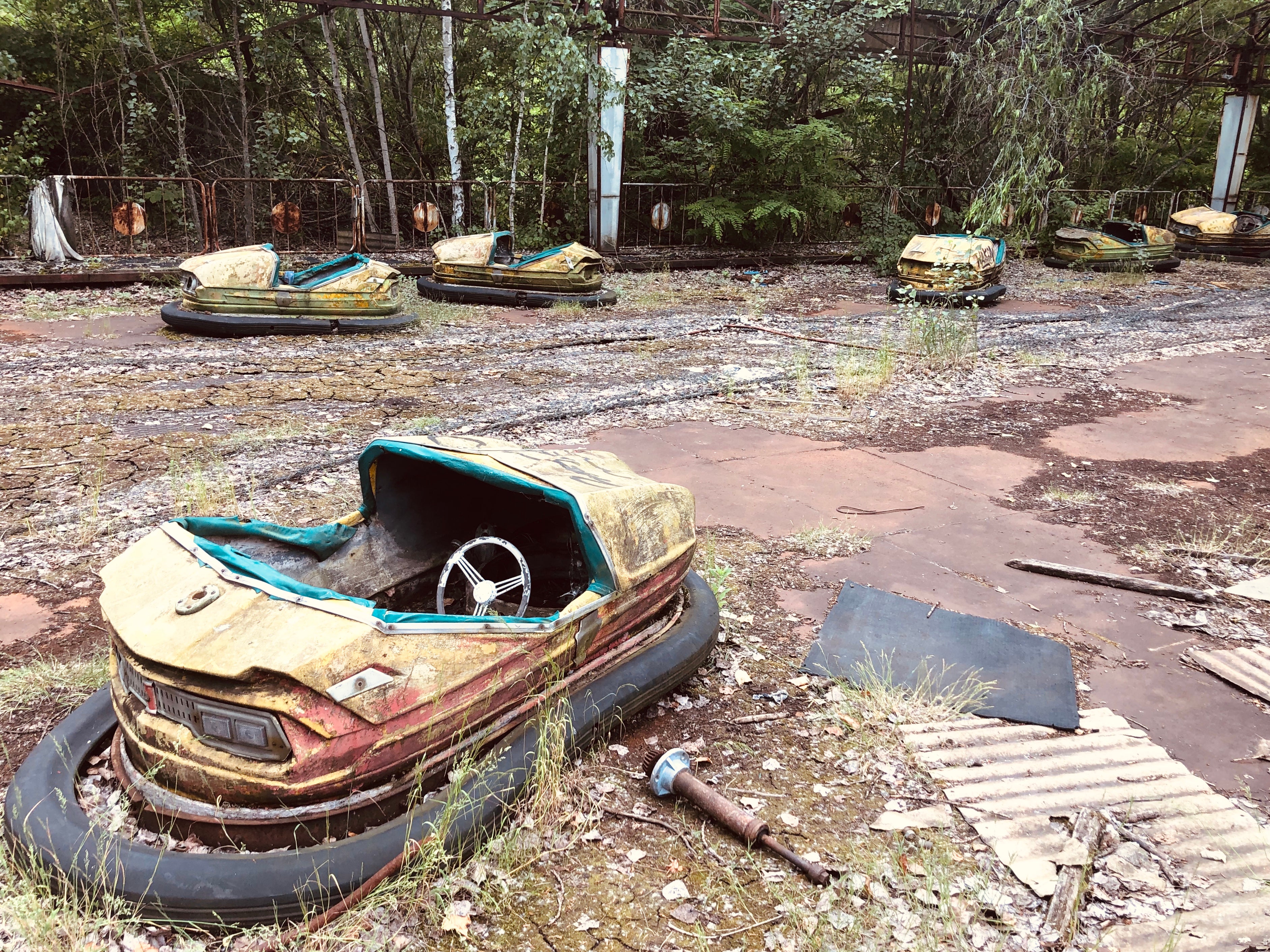Good to go: top nuclear scientist backs Chernobyl day trips
Exclusive: ‘Your visit is helping the local economy with the post-disaster clean up,’ says Dr Claire Corkhill

Thirty-five years after the world’s worst nuclear disaster began, one of Britain’s leading experts on nuclear waste has backed day trips into the exclusion zone at Chernobyl in Ukraine.
Dr Claire Corkhill, reader in Nuclear Material Corrosion at the University of Sheffield, said: “There’s loads to learn about nuclear engineering, about the history of nuclear thinking, forward to the future of nuclear power and also Soviet history.”
The scientist is collaborating with researchers at Chernobyl to study the nuclear fuel that remains within the reactor that exploded on 26 April 1986.
At the weekend, Ukraine International Airlines operated a joy flight over the reactor site – which it describes as “one of the most popular tourist locations in the world”.
One online response was: “This is really sinking to low levels just to generate some income. Flights over a disaster area where many lost their lives making sure it didn’t turn out to be an even worse disaster.”
Ground-based tours were first allowed a decade ago, a quarter-century after the disaster. Only guided visits are allowed. The standard day trip from the Ukrainian capital, Kiev, costs around £110.
Speaking to the You Should Have Been There travel podcast, Dr Corkhill said: “Your visit is helping the local economy with the post-disaster clean up.
“Until the nuclear reactor is cleaned up, the exclusion zone around Chernobyl cannot be used for much at all.
“You’re not allowed to live there because the levels of radioactivity are too high for people to be there for long periods of time. But for short periods of time, I think it’s a fascinating place to visit.”
Tours include the neighbouring town of Pripyat, which was evacuated shortly after the disaster.
“You can see what happens to a concrete city after 35 years of nobody living there,” said Dr Corkhill.
“There are trees growing up through the streets, and wild dogs roaming everywhere – it’s really kind of post-apocalyptic.”

Another academic, Dr Philip Stone of the University of Central Lancashire, has described how tourists to Chernobyl “ritually consume the place as a site of environmental disaster, failed technology and political collapse”.
In an academic paper, Dr Stone, who is executive director of the Institute for Dark Tourism Research wrote: ”Chernobyl is a monument to the secrecy and failings of the Cold War, a warning from history of a nuclear-energy utopia.
“Tourists … wander through the dead zone, arbitrarily protected by Geiger counters that sing warnings of impending ailments.”
Some prospective visitors are concerned about the possible danger in a site of nuclear catastrophe.
But Dr Corkhill said: “The radiation that you get on the ground in Chernobyl is actually less than the dose that you’ll receive when you’re flying from London to Kiev.
“When you’re at 33,000 feet in a plane there’s not so much of the earth’s atmosphere to shield you from the radiation you get from the sun.”
One British visitor, Charlie Smith from London, said of the day trip: “The Chernobyl experience is breathtaking, it’s surreal, it’s dark and creepy at times. It’s got a lot of eerie feelings and it’s quite paranormal.”
(Simon Calder is co-presenter of the You Should Have Been There travel podcast)
Chernobyl: how did a safety test trigger a disaster?
All nuclear power stations in the USSR were required to undergo a safety test to determine whether the reactor could keep on operating safely if there was an emergency loss of coolant.
The fundamental of nuclear power is to split atoms of uranium. That generates loads of heat, which is used to make steam that turn turbines and generate electricity. The fuel needs to be kept cool.
For a number of reasons, the safety test at Chernobyl went really badly. The operators were unable to prevent the fuel from overheating tremendously.
The result was an enormous explosion, that took the roof right off the reactor. The heat from the fuel caused it to melt into a lava – just like in a volcano – and the reactor was set on fire.
This fire was like no other. It kept on burning for 10 days, which led to the wide spread of radioactivity across Ukraine and Belarus, and much of the rest of Europe.
Dr Claire Corkhill
Join our commenting forum
Join thought-provoking conversations, follow other Independent readers and see their replies
Comments
Bookmark popover
Removed from bookmarks